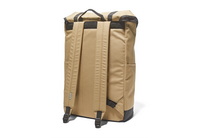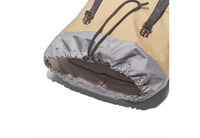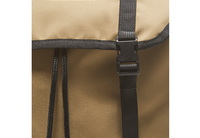Please select size before next step
Sizes:
Choose your store
- Product code: A5WB5-918
- Brand: Timberland
- Gender: Womens#Mens
- Type: Backpack
- Color: Khaki
- Style: Backpack
- Collection: Fall - Winter 2022
Hard work, innovation, and a love of the great outdoors are all big parts of the Timberland story. They have been since the very beginning.
It all started in 1952 when our founder, Nathan Swartz, bought a half-interest in the Abington Shoe Company. He worked his way up from an apprenticeship after immigrating to the United States and eventually bought out his partner and welcomed his sons into the business.
The Abington Shoe Company soon moved to Newmarket, New Hampshire, located in a tiny corner of New England known for its majestic mountain ranges, rocky shorelines, dense forests, rivers, lakes, and access to great east coast cities. This part of the world experiences every type of weather—blizzards, instant rainstorms, bitter winters, and summer heat waves.
Stepping outside in any kind of weather was a problem Timberland was born to solve.
In 1973 our original waterproof boots called the “Timberland” were invented. They were rugged, well-crafted, and—thanks to an innovative injection molding technique which was new to the footwear industry—they withstood the elements. These premium “yellow” boots set new standards for waterproof performance in the footwear industry. They became equally popular with outdoor enthusiasts who needed protection in all conditions, professional trade workers who needed rugged dependable gear, and many others who just wanted a great looking pair of boots. These boots defined our brand. They were so groundbreaking that in 1978 we renamed the entire company.
Timberland’s heritage of hard work, innovation, and love of nature continues. We are here to inspire and equip the world to step outside, work together and make it better. Today, we find the outdoors everywhere, from right outside our doors to places far beyond. We find it in cities, suburbs, and the countryside. It’s where we work, play and connect to one another. That’s why we are on a mission to make our brand and company a force for positive change. We are committed to making our world greener, our communities stronger, and our products better with less impact on the environment.
BETTER PRODUCT
When we design a new boot, shoe, jacket, pair of glasses, or even a T-shirt, it not only has to look great, we need to consider its impact on nature. Ever since introducing our original waterproof boots, we’ve remained focused on making innovative products that get people outdoors, are made with environmentally-conscious materials, and crafted to last for years. We aim to not only minimize our impact on the environment through the products we make, but to someday become net positive.
Our product innovations over the years:
1968:The Swartz family introduces injection-molding waterproof technology to the footwear industry, allowing us to create some of the first truly waterproof leather boots.
1973:We debut our original guaranteed waterproof boot called the Timberland.
1978:We introduce our first hand-sewn casual shoe featuring premium leathers and hand-stitched details.
1979:Our first boat shoe launches, bringing premium craftsmanship to people in summer weather.
1980:We take our products outside the United States for the first time, starting in Italy.
1988:We introduce Timberland® apparel.
1999:The Timberland PRO® Series launches, delivering performance and protection to skilled workers everywhere.
2005:Timberland co-founds the Leather Working Group (LWG), and makes a public commitment to only source leather from tanneries that achieve a silver/gold rating from LWG audits
2007:The original Earthkeepers® boot is introduced, made with recycled, organic, and renewable materials.
2013:The equivalent of 128 million plastic water bottles are recycled into our footwear, since 2009. By 2018, that number grows to over 345 million.
2018:We create ReBotl™ material for footwear and apparel which is made with recycled plastic.
2019:British fashion designer Christopher Raeburn is named Global Creative Director for Timberland, bringing with him a philosophy of REMADE, REDUCED, RECYCLED product creation.
STRONGER COMMUNITIES
We believe in the power of thriving communities to accelerate global change with one unified, passionate voice. And we support the skilled trades as a powerful way to build stronger communities through service. Every full-time Timberland employee gets up to 40 hours of paid time to volunteer in their communities. We’ve served more than 1.2 million hours worldwide, with a goal of reaching 1.5 million hours by 2020.
GREENER WORLD
Trees and green urban spaces have the power to improve the quality of our planet and our inspanidual well-being. They clean air, prevent erosion, save water, reduce stress and much more. Tree planting plays an important role in our commitment to the environment. We’ve planted millions of trees around the world, empowering thousands of smallholder farmers in the process. Since 2001, we’ve planted over 10.2 million trees worldwide. We aim to plant 50 million more trees by 2025 because a greener future is a better future.
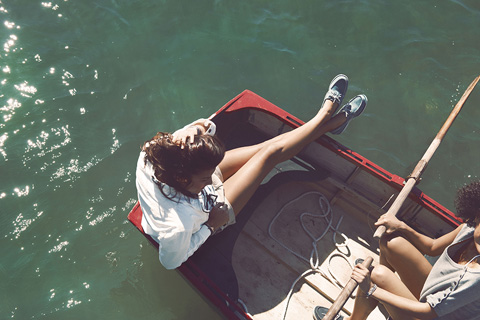
Product information:
Timberland Europe B.V.
Darwin 8
Almelo
7609 RL
The Netherlands
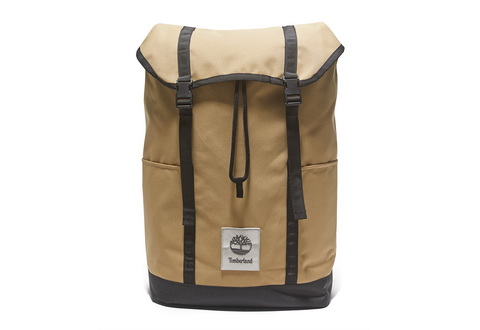
- Product code: A5WB5-918
- Brand: Timberland
- Gender: Womens#Mens
- Type: Backpack
- Color:Khaki
- Style: Backpack
- Collection: Fall - Winter 2022
Hard work, innovation, and a love of the great outdoors are all big parts of the Timberland story. They have been since the very beginning.
It all started in 1952 when our founder, Nathan Swartz, bought a half-interest in the Abington Shoe Company. He worked his way up from an apprenticeship after immigrating to the United States and eventually bought out his partner and welcomed his sons into the business.
The Abington Shoe Company soon moved to Newmarket, New Hampshire, located in a tiny corner of New England known for its majestic mountain ranges, rocky shorelines, dense forests, rivers, lakes, and access to great east coast cities. This part of the world experiences every type of weather—blizzards, instant rainstorms, bitter winters, and summer heat waves.
Stepping outside in any kind of weather was a problem Timberland was born to solve.
In 1973 our original waterproof boots called the “Timberland” were invented. They were rugged, well-crafted, and—thanks to an innovative injection molding technique which was new to the footwear industry—they withstood the elements. These premium “yellow” boots set new standards for waterproof performance in the footwear industry. They became equally popular with outdoor enthusiasts who needed protection in all conditions, professional trade workers who needed rugged dependable gear, and many others who just wanted a great looking pair of boots. These boots defined our brand. They were so groundbreaking that in 1978 we renamed the entire company.
Timberland’s heritage of hard work, innovation, and love of nature continues. We are here to inspire and equip the world to step outside, work together and make it better. Today, we find the outdoors everywhere, from right outside our doors to places far beyond. We find it in cities, suburbs, and the countryside. It’s where we work, play and connect to one another. That’s why we are on a mission to make our brand and company a force for positive change. We are committed to making our world greener, our communities stronger, and our products better with less impact on the environment.
BETTER PRODUCT
When we design a new boot, shoe, jacket, pair of glasses, or even a T-shirt, it not only has to look great, we need to consider its impact on nature. Ever since introducing our original waterproof boots, we’ve remained focused on making innovative products that get people outdoors, are made with environmentally-conscious materials, and crafted to last for years. We aim to not only minimize our impact on the environment through the products we make, but to someday become net positive.
Our product innovations over the years:
1968:The Swartz family introduces injection-molding waterproof technology to the footwear industry, allowing us to create some of the first truly waterproof leather boots.
1973:We debut our original guaranteed waterproof boot called the Timberland.
1978:We introduce our first hand-sewn casual shoe featuring premium leathers and hand-stitched details.
1979:Our first boat shoe launches, bringing premium craftsmanship to people in summer weather.
1980:We take our products outside the United States for the first time, starting in Italy.
1988:We introduce Timberland® apparel.
1999:The Timberland PRO® Series launches, delivering performance and protection to skilled workers everywhere.
2005:Timberland co-founds the Leather Working Group (LWG), and makes a public commitment to only source leather from tanneries that achieve a silver/gold rating from LWG audits
2007:The original Earthkeepers® boot is introduced, made with recycled, organic, and renewable materials.
2013:The equivalent of 128 million plastic water bottles are recycled into our footwear, since 2009. By 2018, that number grows to over 345 million.
2018:We create ReBotl™ material for footwear and apparel which is made with recycled plastic.
2019:British fashion designer Christopher Raeburn is named Global Creative Director for Timberland, bringing with him a philosophy of REMADE, REDUCED, RECYCLED product creation.
STRONGER COMMUNITIES
We believe in the power of thriving communities to accelerate global change with one unified, passionate voice. And we support the skilled trades as a powerful way to build stronger communities through service. Every full-time Timberland employee gets up to 40 hours of paid time to volunteer in their communities. We’ve served more than 1.2 million hours worldwide, with a goal of reaching 1.5 million hours by 2020.
GREENER WORLD
Trees and green urban spaces have the power to improve the quality of our planet and our inspanidual well-being. They clean air, prevent erosion, save water, reduce stress and much more. Tree planting plays an important role in our commitment to the environment. We’ve planted millions of trees around the world, empowering thousands of smallholder farmers in the process. Since 2001, we’ve planted over 10.2 million trees worldwide. We aim to plant 50 million more trees by 2025 because a greener future is a better future.

Product information:
Timberland Europe B.V.
Darwin 8
Almelo
7609 RL
The Netherlands



